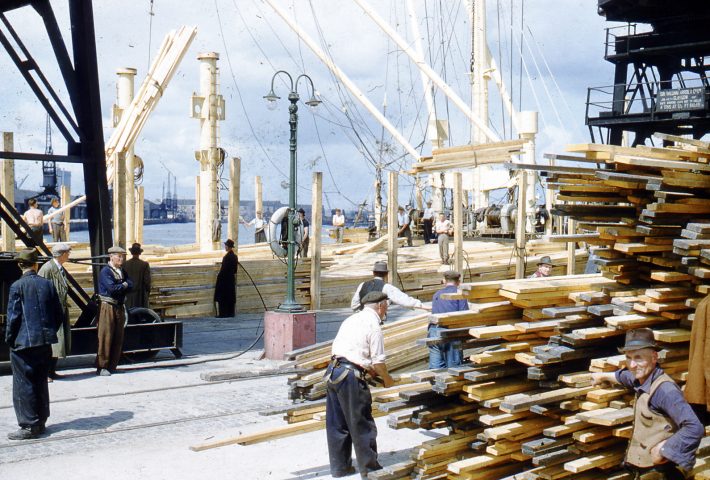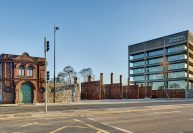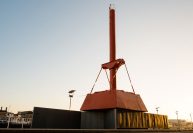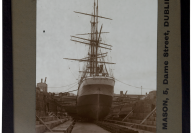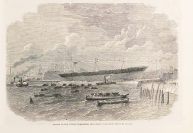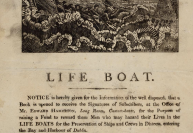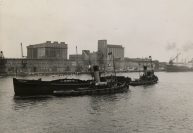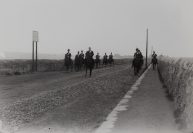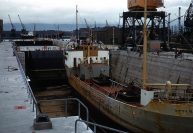Engineer Drawing Collections
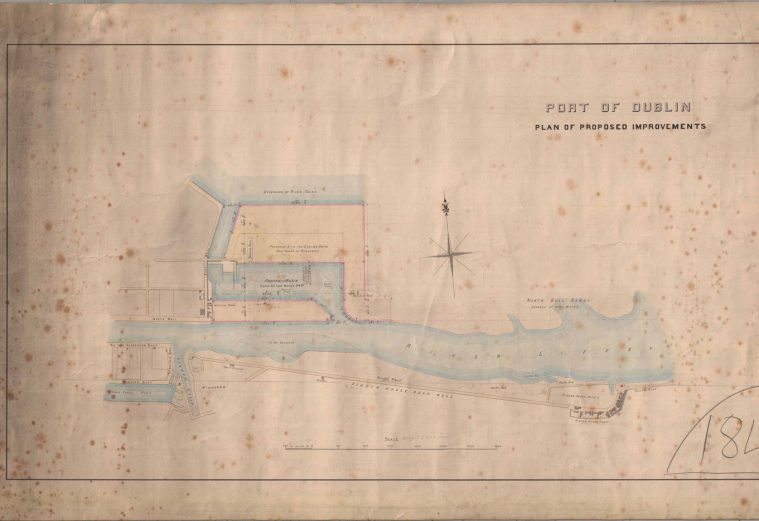
When the first Port Authority was set up back in 1707, Dublin’s landscape was to change drastically. The capital had experienced minor alterations throughout the 1600s. The Dublin mapped by Speed and Moll is roughly the same, despite a century elapsed in-between. However, if we travel only half of a century ahead in time to Rocque’s 1756 map, a very different city is presented to the beholder. The Liffey no longer diverted in multiple channels, and the South Wall already stretched over 4 km out in the bay.
Both set the start of the large port infrastructure projects undertaken by the port authorities. The 18th and 19th centuries witnessed the construction of significant landmarks such as the North Bull Wall, Custom House and George Dock, the North Wall Extension or Alexandra Basin. Completion of the deep seaport took place throughout the 20th century by reclaiming the space from the sea.
The port development left a fair share of archive materials. Dublin Port Company predecessors preserved a wide range of drawings, plans and other documents. Nowadays, the Dublin Port Archive engineering drawings collection comprises over 30,000 items. Some bear the signature of illustrious Irish engineers as George Halpin, Bindon Blood Stoney, J. P. Griffith or Joseph Mallagh.
Archives are part and parcel of Industrial Heritage. As per ICOMOS definition, Industrial Heritage includes documents liked to industrial processes like production, extraction and transformation of raw materials, along with the related energy and transport infrastructures (Principles of Dublin, 2011). Besides, archives are essential for the first principle outlined by ICOMOS regarding documenting and understanding Industrial heritage structures, sites and landscapes.
Dublin Port Company is fully committed to preserve port heritage and culture. The Masterplan reflects it by setting to contribute positively to Dublin and its citizens as a policy driver. Dublin Port development and operations must have a positive impact. Heritage and the facilitation of its public access are essential actions to achieve this goal. However, physical access often clashes with conservation. Exposure to light and humidity can damage the documents. Handling is one of the major sources of deterioration. Digitization is a common solution. It allows accessibility without compromising the archives. These can be kept safe and cared for by archive professionals.
Following this principle, Dublin Port embarked on a great digitalization project throughout 2020-2021. Dublin Port worked with Archives Ireland to scan 4,4000 engineering drawings. The project began in 2018 when Magnus Archaeology surveyed the collection. After identifying the most significant items, the packing process to move the collection started. A trained conservator took care of custom-making conservation folders. Some drawings required restorative treatment. Cleaning and consoldiation procedures were performed to ensure the drawings were fit for scanning. Archives Ireland archivists took out each item and scanned them inside special enclosures to generate a digital file, causing no damage.
This project represents the first step to unveiling the treasures under DPC care. The plan is to release the collection on the Dublin Port Archive website, facilitating their public use to researchers, students, heritage enthusiasts and port communities.
Help us with the Archive
You can help us to preserve Dublin Port’s rich archival heritage by
donating items or seek advice from us on items in your safekeeping.
Get in touch by completing the contact form below.
We’d love to hear from you!
